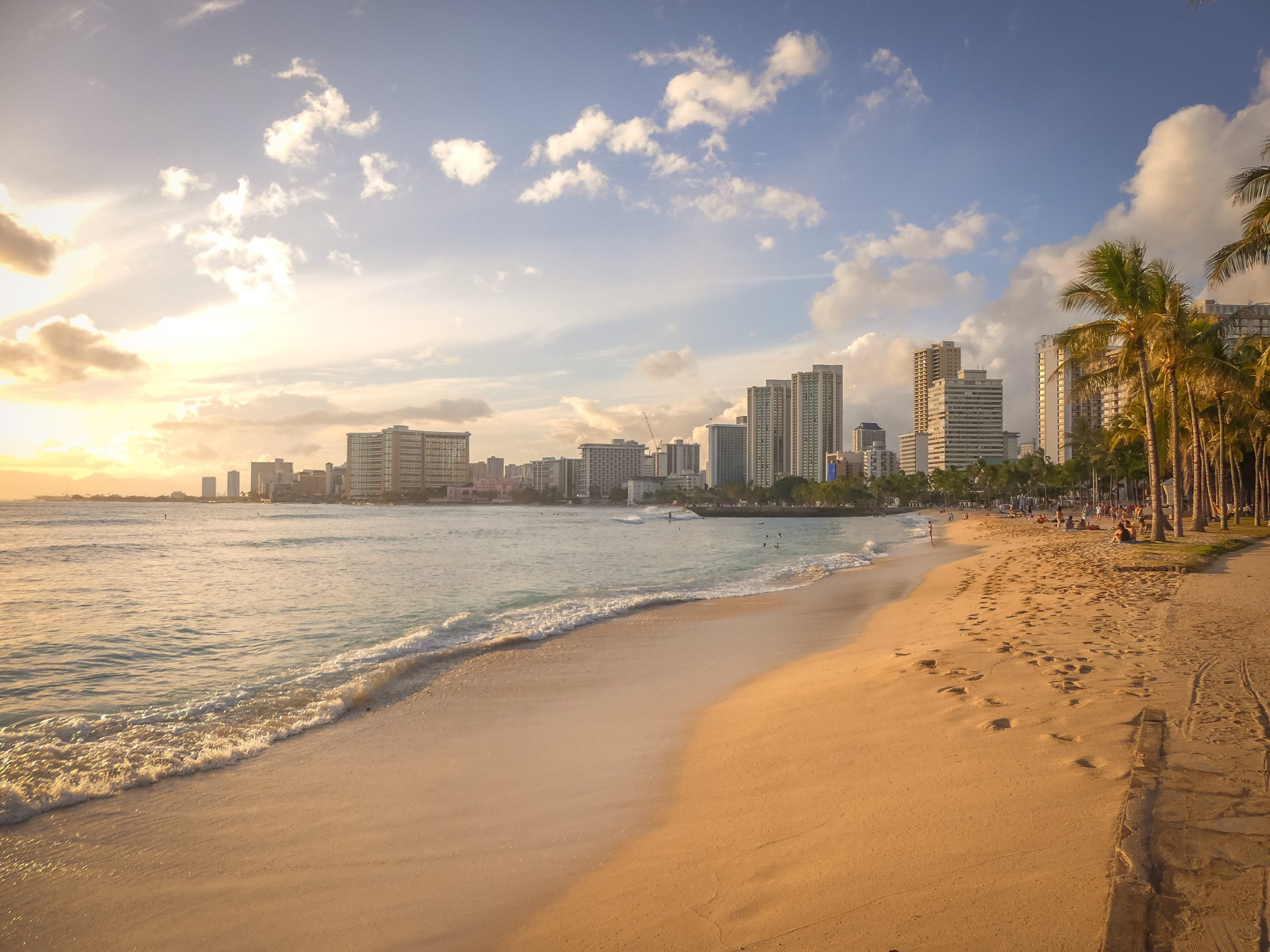
Whether you’re a first-timer or a seasoned traveler, you want to make the most of your Oahu getaway with my top Hawaii beach tips for first timers. Oahu has over 125 beaches. Each has its own character and complexity. So I’m gonna share my Hawaii beach Do’s and Dont’s.
From preserving marine life to respecting local guidelines, these Oahu beach tips will help you enjoy a safe and responsible Hawaiian beach experience. So, let’s dive into Hawaii beach essentials.
I never leave home without travel insurance that covers travel theft and adventure activities that basic plans don’t. Here’s a trip insurance finder tool to find a plan that matches your budget.
20 Top Hawaii beach tips
Oahu Beach Tips | Things to DO:
1. DO use Reef-friendly sunscreen
Use sunscreen labeled as “reef-friendly” to protect coral reefs and marine life. Look for products containing zinc oxide or titanium dioxide as active ingredients and avoid sunscreens with harmful chemicals that can damage marine ecosystems. Read my Reef Safe Guide: 10 Best Sunscreen to Buy
Hawaii has taken steps to ban sunscreens containing harmful chemicals that can damage coral reefs. Hanauma Bay is one of our well-known snorket spots, but it is also under the threat of coral bleaching due to the sheer volume of tourists that visit on a daily basis. So please use coral-friendly sunscreen to do your part in helping our oceans and coral.
Check out these Hawaii Made Reef Safe Sunscreens
2. DO Respect marine life
Those green turtles and Hawaiian seals are cute when they lay out on the beach. But keep a safe distance – at least 10 feet – from marine life while snorkeling, swimming or on the beach.
Heed the laws of our endangered species like green turtles and Hawaiian seals. Nothing angers locals – myself obviously included- more than a tourist that harasses our endangered species. Recently, I witnessed a tourist trying to ride a Hawaiian green turtle and yelled at the violator (he was a bit away). If I saw a police, i’d have reported him, as violators can get slapped with a fine and jail time.
If anyone tries to touch them, please warn them that it is illegal to harass these endangered animals. Help others be good stewards too.
3. DO visit beaches with lifeguards
Each of Hawaii’s beaches are characteristically different and possesses unique challenges… and occasional risks. Lifeguards are stationed strategically along the shores for popular tourist and local beaches. If swimming, try to swim in eyeshot of them.
Some beaches don’t have lifeguards and this means you enter waters at your own risk. If you choose to swim at a beach without a lifeguard, please make sure you are a strong swimmer and avoid high tides and strong currents.
4. Do follow local signs & warnings
Pay attention to signs that indicate hazards, restricted areas, or specific rules unique to each beach, natural attraction or hiking trail. They are there as warnings to both locals and tourists. Do not gamble with your life for an instagram shot!
As far as beaches go, we have high surf warnings when the surf is strong, undertow signs to let you know there are tricky pockets in the water where the current can pull you under and jellyfish warnings to notify you that you may get stung – and they are painful- if you go swimming or walk along the shores!
5. Do check local weather and ocean conditions
Before heading out to the beach, take a moment to check the local weather forecast and ocean conditions. Hawaii’s beaches are susceptible to strong currents and high surf, which can vary depending on the season and location. Stay informed about potential hazards and advisories to make well-informed decisions about water activities.
Also, different parts of the island have different weather conditions. Read this post on Hawaii trip planning
Tip: Check your mobile weather app and plug in the specific city or town you’re heading to. I also like Clime- NOAA weather radar app for more intensive weather updates. They’re especially good for tracking stormy weather and rain. They will tell you exactly what area of the island is raining.
6. DO stay hydrated
These days Hawaii is getting hotter, weather wise. Blame global warning! Nevertheless, our climates are still mild in comparison to states that hit over 100 degrees Farenheit during the summers.
Our weather ranges 70’s-80’s during winter and high 80’s to low 90s during summer as an average. Our tradewinds make it comfortable.
The tropical climate of Hawaii provides ample sunshine, that makes for ideal conditions for a beach day. However, this climate can also be dehydrating. Ensure you stay hydrated by bringing an ample supply of water. Whether you’re engaging in water activities, laying out for a tan, or hitting our tropical trails, proper hydration is essential.
Bring a reusable water bottle to reduce plastic waste and to have a convenient means of quenching your thirst throughout the day.
Tip: I like to buy PATH water because it has a reusable aluminum bottle that works perfect. I’ve traveled with mine through five countries this year! If you ever lost it, you’re not out of pocket like you would be a hydroflask! Not to mention, it comes with alkaline water as an incentive.
7. DO protect against sun
While the sun in Hawaii offers warmth and radiance, it also carries the potential for sunburn and skin damage. Yep, even if you’re under the shade of a tree, you can still get skin damage.
Bring hats with wide brims, sunglasses with UV protection, and lightweight long-sleeved shirts or rash guards to shield yourself against harmful UV rays. Complement these measures with “reef-friendly sunscreen” as I mentioned above.
8. DO wear footwear for rocky beaches
While the sun in Hawaii offers warmth and ideal outdoors conditions, it also carries the potential for sunburn and skin damage. Embrace a proactive approach to sun protection by wearing suitable clothing. Hats with wide brims, sunglasses with UV protection, and lightweight long-sleeved shirts provide effective shields against harmful UV rays. Complement these measures with the application of sunscreen, preferably one labeled as “reef-friendly.” Hawaii has taken steps to ban sunscreens containing harmful chemicals that can damage coral reefs. Opt for products with zinc oxide or titanium dioxide as their active ingredients, ensuring your sun protection aligns with the preservation of the marine environment.
Tip: Flip flops can work in the water but even better, are water/reef shoes (they’re inexpensive too!)
9. DO secure valuables or don’t bring them
As you revel in the beauty of Hawaii’s beaches, it’s essential to safeguard your valuables. Utilize lockers if available or invest in waterproof pouches for items like phones, keys, and wallets.
Check out anti theft bag for travelers.
Adopting a minimalist approach by bringing only the essentials not only lightens your load but also minimizes the risk of loss or theft. Be mindful of your belongings, especially in crowded areas, to ensure a worry-free beach day. Read this post on ways to avoid pickpockets & travel theft.
Amidst the allure of Hawaii’s inviting waters, it is paramount to be aware of your own swimming and snorkeling abilities. The ocean conditions can vary, with some areas experiencing strong currents or other hazards. If you are not a strong swimmer, stick to designated swimming areas.
11. Do visit smaller local beaches
Hawaii is not Waikiki. Did you know Oahu is home to over 125 beaches? We have something like 37 popular and well-known beaches, but the rest are small local beaches that you have to explore and find yourself. Each one has its own unique character and hazards, so definitely heed these beach tips I’m sharing. We’ve got some not-so-nice beaches but a lot are absolutely lovely and can make great picnic, swimming and photo spots!
Tip: Rent a car for the day and drive around the island. Stop at the beaches along the way. Check out Discount Hawaii Car Rental. They have some of the best prices I’ve seen!
Check out my Waikiki Beach: 13 tips for a stress-free vacation
12. Do get trip insurance
Snorkeling, scuba diving, windsurfing, parasailing is fun! Ocean activities is what Hawaii is known for. But whether it’s your first time trying it or you’re a seasoned expert who is new to Hawaiian waters, you have to consider what happens if things go wrong? Overlooking the importance of travel insurance for unexpected events in Hawaii is a mistake of first time travelers to Hawaii.
How often do tourist accidents happen? More than you think. I’ve seen ocean medevac with helicopters do search rescues for lost hikers and swimmers who got slammed against the rocks and pulled too to sea . .
If traveling domestically or you have trip insurance through your credit card loyalty program, you might not feel you need trip insurance. I get it. It’s an extra expense. But most basic travel insurance doesn’t cover outdoor sports or “medium to high risk” activities
If you’re a U.S. traveler, check with your health insurance to see if it covers medical attention in Hawaii. Although your health insurance plan may work in Hawaii because it’s a domestic destination, each insurance company has its own rules for out-of-state health coverage.
Tip: Many credit card loyalty programs have a basic trip insurance if you buy your flight ticket using it, but this insurance is not comprehensive. If you’re planning more adventurous outdoor activities, you’ll want something that covers it. I use World Nomads (for theft and adventure sports). Here’s a trip insurance finder tool to compare different plans that matches your budget and needs.
13. Do buy your snorkel and beach gear when you arrive
Why weigh your bags down with beach gear when you can grab it as a souvenir from the islands. From bikini and surf shops to snorkel, beach chairs and giant blowup unicorn floaty devices, Oahu has it all.
Buy your gear from the plethora of stores – local boutique shops in your hotels (please consider supporting small local businesses) or on the strip, ABC Stores, Ross for Less- from Wakiki or rent a car and visit 7Eleven, Costco, WalMart and Target in Honolulu.
Tip: Don’t want to take your gear with you? Gift it to another traveler in your hotel or on Waikiki beach. Look for a family- they’re usually quite receptive! You’ll have helped a fellow traveler and they’ll be grateful for it.
Oahu Beach Tips: Things to AVOID~
14. Avoid Touching Coral when snorkeling
AVOID touching or standing on coral reefs. Coral is fragile and can be easily damaged, harming the delicate marine ecosystem that is home to fishes, marine life and other sea creatures. I’ve seen inexperienced snorkelers get pushed to the coral and either stand on it to look for friends or kick off on it because they got too close. If you are an inexperienced snorkeler, its best to keep a good distance from it, as the currents can pull you there quick.
Tip: For inexperienced snorkelers, I recommend a 15-20 feet distance from the coral at least, if not further. This gives you room to detour if tides currents you into them… which they will.
15. Avoid Feeding Marine Life
AVOID feeding fish or any marine life. Feeding disrupts their natural behavior and can be harmful to their health, especially if you don’t know what they really eat.
Note: If you’re doing a shark tank, dolphin spotting, swimming with turtles tour, research your operator and choose an ethical operator, with responsible practices. Avoid operators that bait or chum fish to create a guaranteed spotting. In fact, any operator who guarantees you an interaction, is unethical. This bad practice of chumming waters creates unnatural feeding habits for the marine life and there is a cause and effect in the ecosystem and interaction with humans. While I disagree with any marine life interaction/snorkel tour with our endangered species, if you have to see marine life, go with an operator who knows the habits of the species because they spend time with them. Not because they’re baiting them.
Read my tips on being an ethical traveler.
16. Don’t Ignore Warning & Restricted Area signs
Just putting this out again, because it happens and another Darwin award hits our local news of how a tourist trespassed and is dead, had to have a helicopter rescue, is in the hospital.
Warning signs and advisories are not suggestions; they are critical guidelines for your safety. Sure we have illegal hikes and locals have known to break these laws too, like hiking the Stairway to Heaven hike (and no i’ve not done it because a security guard is there to keep hikers from entering).
When locals do things like that, it’s because we know our island and grew up learning its hazards, from friends, family, self taught lessons that got us hurt. But this is not an excuse for locals either. NO ONE should be trespassing or doing anything illegal.
17. Don’t Leave Trash Behind
AVOID leaving your trash behind. The rule of thumb is that if you brought it in, take it out. Dispose of your waste in trash bins or carry it with you until proper disposal is available. Hawaii’s beaches are not a garbage dump.
Trash like wrapped food or cigarette buts can be digested by hungry birds who fall ill and die. Or it can get washed into the ocean and mistakenly eaten by fish which die from it as well.
If you love meetups and want to participate in something that gives back and helps everyone enjoy the beaches, do a beach clean-up! There are online groups on Facebook like 808 Cleanups. It’s a great way to make local friends and join a part of our beach community.
Read my eco-friendly tips for travelers
18. Avoid the homeless camp areas
The homeless population in Hawaii has grown exponentially and one of the places they like to camp at is the beach (think free showers and toilets). Many of them are harmless and you can be kind. But these days we’ve been getting more and more mentally-imbalanced ones too that are struggling with addiction. if they have a camp or tent set up they may not like your being nearby.
Be cautious and always assess the area you are in.
Tip: Lock your cars and do not leave valuables in them.
19. Avoid Climbing on Rocks Unnecessarily
The captivating lava rock formations along Hawaii’s beaches are not only picturesque but also ecologically valuable. AVOID climbing on rocks unnecessarily, as this can lead to erosion and damage to these natural formations.
Additionally, you can can get hurt.These rocks are sharp and jagged and I’ve seen many naive beach goers get cut-up. A popular hidden beach for Instagram mystique is the mermaid caves. Yes, they are gorgeous, but the lava rocks getting to them are sharp and you run the risk of getting cut. Think twice before you do it for the ‘gram. Is it worth it?
20. Don’t Enter Closed Areas
Some beach areas may be closed or restricted for conservation purposes. AVOID entering these zones, as they play a crucial role in preserving the natural balance of the environment. One off-the-beaten-path beach hike we have is Kaena Point. There’s a restricted area that houses a bird and seal sanctuary and it is also a sacred Hawaiian burial ground area that one should be respectful of. It’s open to hikers but also gated to protect the birds housed there.
Respect posted signs and barriers, recognizing that these areas contribute to the long-term sustainability of Hawaii’s coastal ecosystems.
21. AVOID sticking solely to Waikiki Beaches
Waikiki has wonderful beaches. it’s easy to think that’s all there is. It’s fragranced with Banana Boat tanning oil and the beaches are crowded during high season. Please explore the local beaches outside of that. Right outside Wakiki across Ala Moana shopping center you’ve got two of our popular Ala Moana/Magic Island family beach parks (and home of some of the best sunsets!) The west coast has gorgeous although rugged beaches. The Northshore is where all the surfing action and Billabong teams reside, the Windward side features gorgeous beaches like Lanikai and Kailua and there’s many many beaches along the way. Just do a scenic drive around the island and you can stop at any one.
Check out my Waikiki Beach tips
With these tips, your Hawaiian beach experience is set to be not only memorable but also respectful of the islands’ natural beauty. Enjoy the sun, sand, and surf responsibly!
What would you add to this top Hawaii beach tips for Oahu?
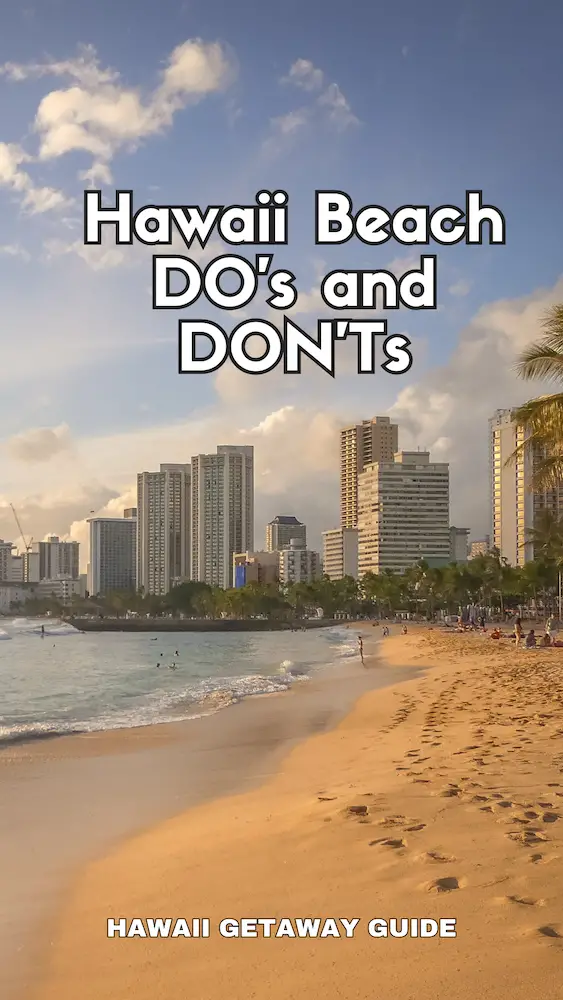
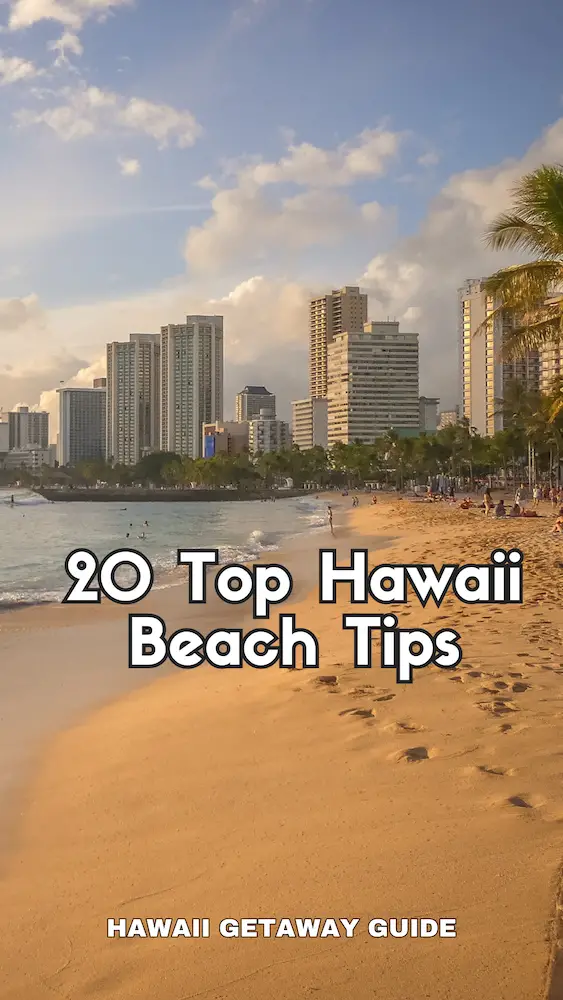


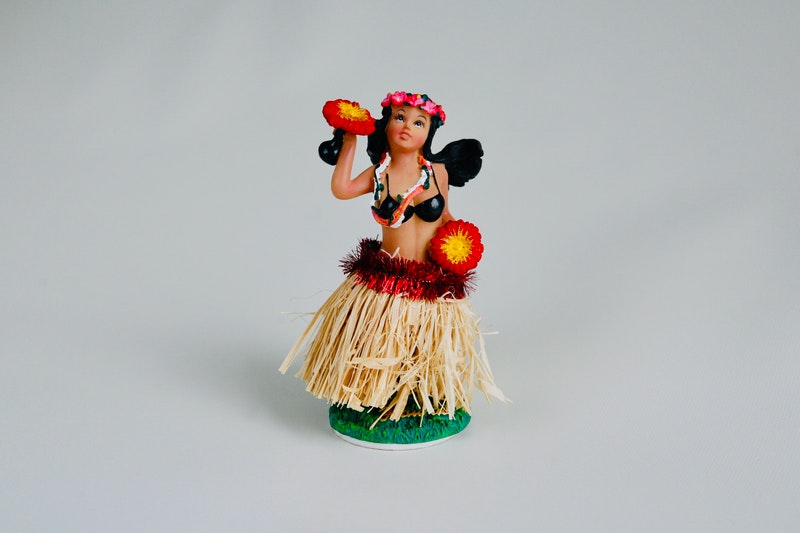
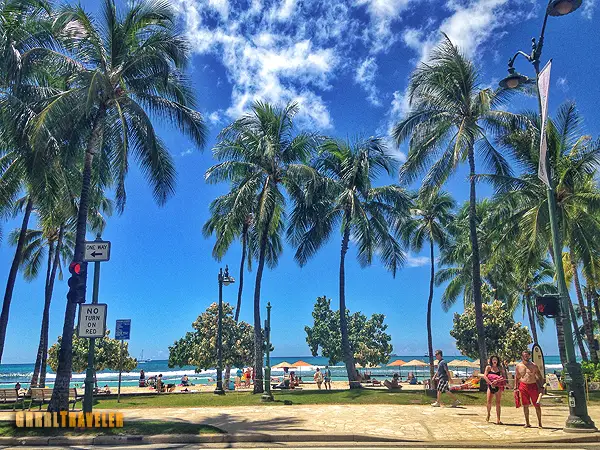
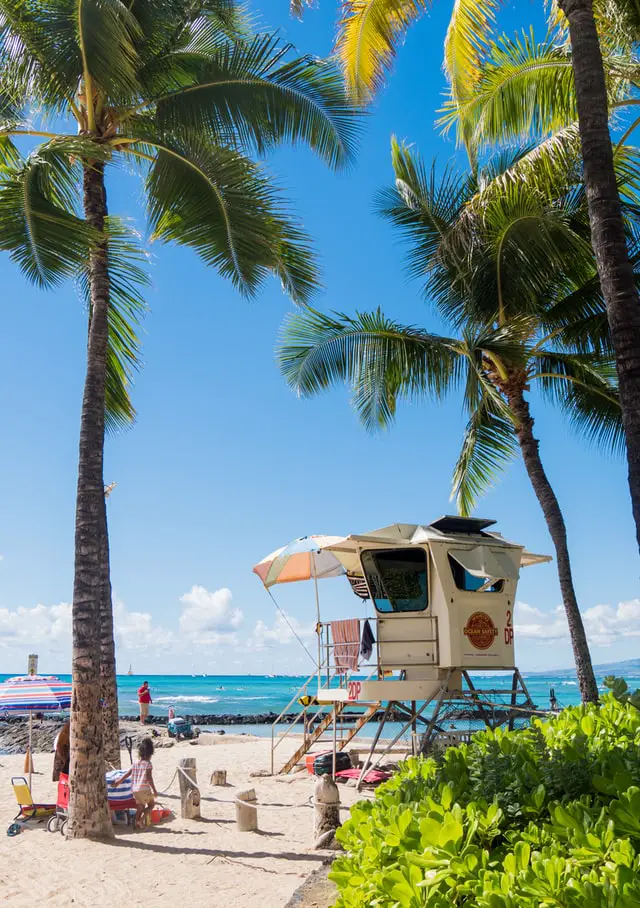
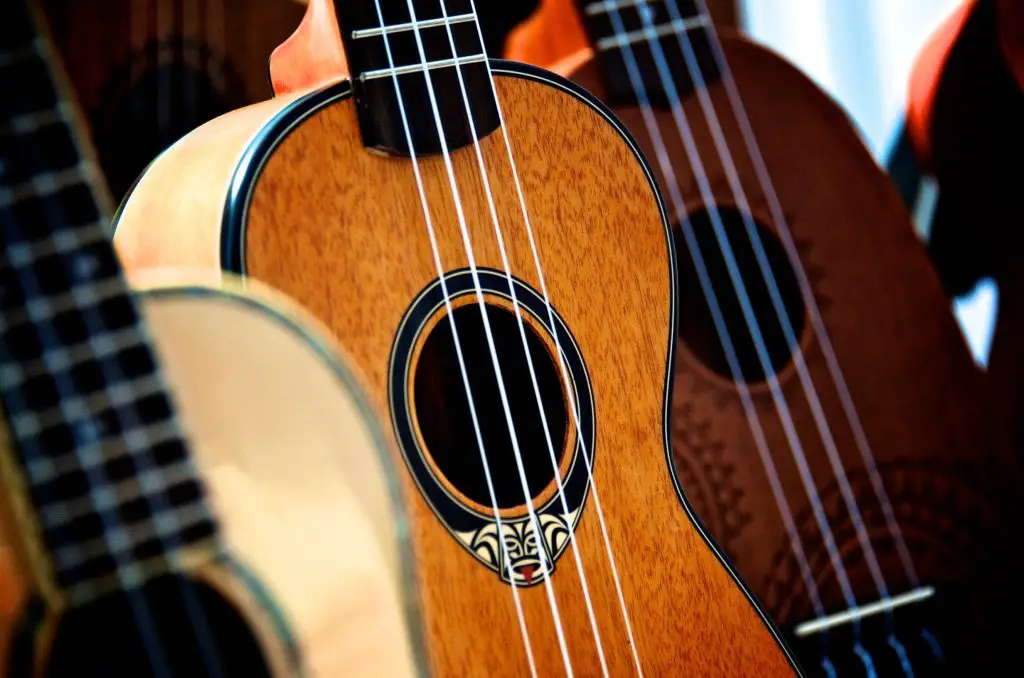
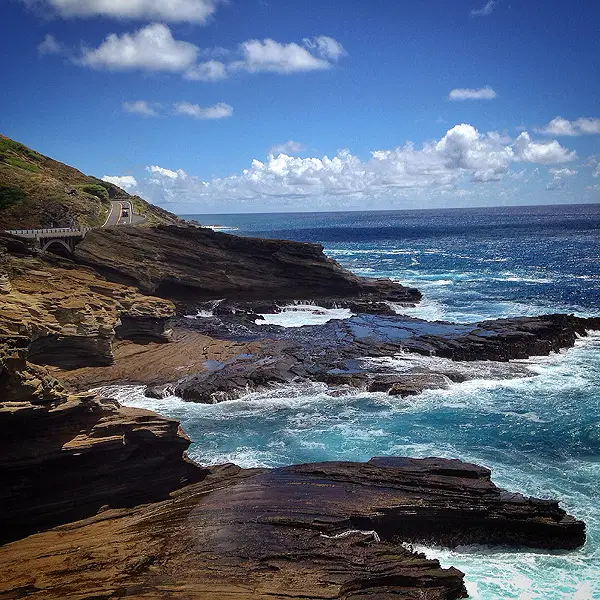
 Subscribe to my channel
Subscribe to my channel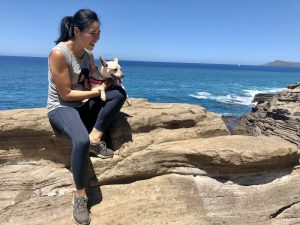
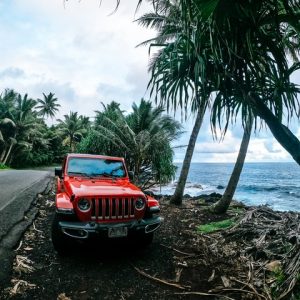





Recent Comments